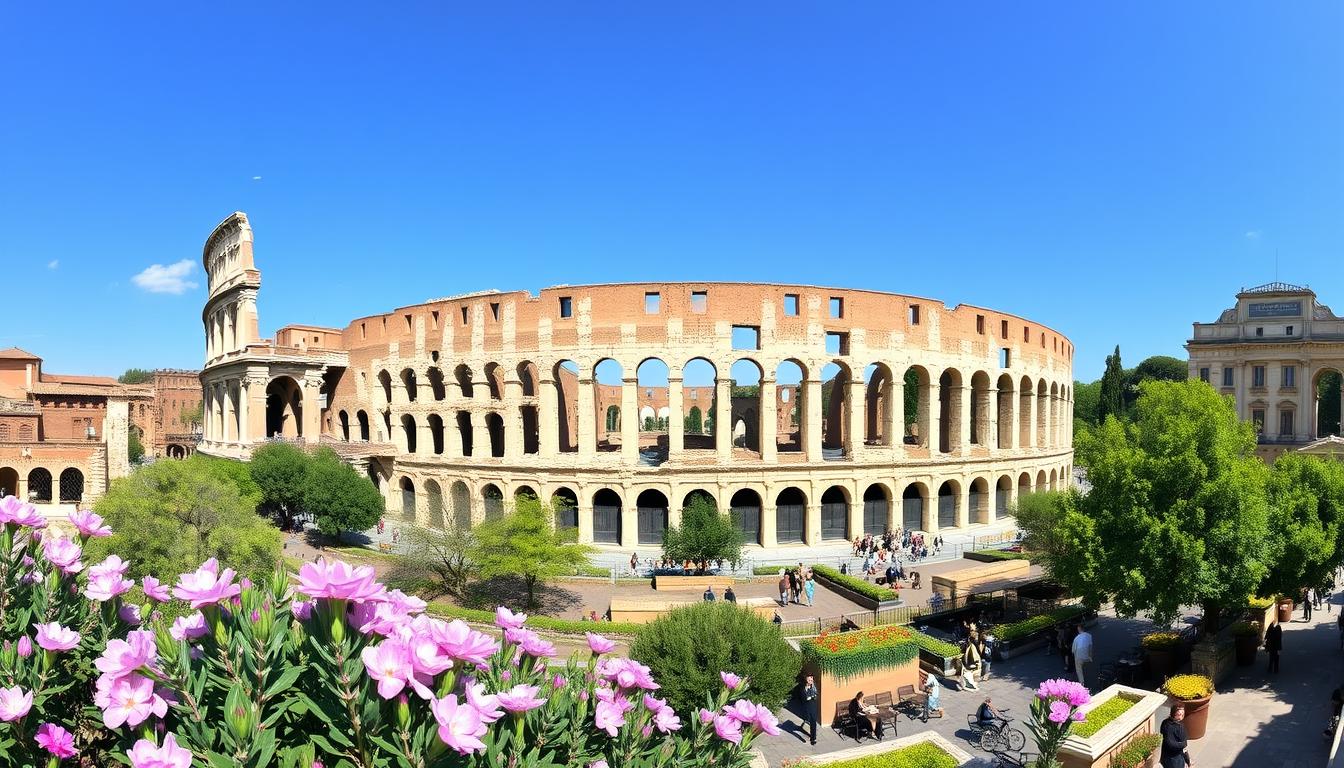Best Time to Visit Ancient Rome: Travel Guide
Exploring Rome’s ancient wonders is an exciting adventure. But, knowing when to go is key for a memorable trip. This guide helps you find the best times to visit Ancient Rome. We look at weather, crowds, and historical events.
Whether you want the perfect sightseeing weather or to dive into the city’s culture, we’ve got you covered. This article offers insights to plan your Roman journey.
Key Takeaways
- Discover the optimal weather conditions for exploring Ancient Rome’s iconic landmarks and attractions.
- Learn about the seasonal festivals and cultural events that can enhance your travel experience.
- Understand how to avoid the most crowded periods and enjoy a more immersive and authentic visit to the Eternal City.
- Plan your trip around the unique benefits and charms of each season in Ancient Rome.
- Tailor your itinerary to make the most of your time in this timeless destination.
Best Time to Visit Ancient Rome: Seasonal Overview
Exploring Rome is a thrilling adventure. The best time to visit depends on what you like and what you want to see. Let’s look at Rome’s spring, fall, and winter, helping you plan and avoid the crowds.
Spring in Rome (March to May)
Spring in ancient Rome is lovely. The city is alive with seasonal attractions. It’s warm, from 60°F to 75°F, perfect for walking and seeing sights.
The historical Rome climate is mild, with some rain. This adds to the city’s beauty. You’ll see flowers blooming, fewer people, and a lively vibe as the city gets ready for more visitors.
Fall Experience (September to November)
Fall in Rome is cooler, from 55°F to 70°F. It’s great for seeing famous sites. This time, you can avoid crowds and dive deep into Rome’s history and culture.
There are fewer tourists than in summer. It’s a quieter time to explore and enjoy the city’s rich heritage.
Winter Season Benefits (December to February)
- Cooler historical Rome climate with temperatures ranging from 40°F to 55°F
- Fewer crowds and a more relaxed atmosphere
- Opportunity to experience the city’s vibrant holiday celebrations and festive events
- Chance to explore indoor attractions and museums without the hustle and bustle of peak seasons
Rome is special in spring, fall, and winter. Each season offers a unique and unforgettable experience. By choosing the right time and avoiding crowds, you can make your visit perfect.
Historical Festivals and Cultural Events in Ancient Rome
Ancient Rome was full of life with many celebrations and events. Festivals like Saturnalia, a wild winter solstice party, and Lupercalia, a ritual to purify, were key. These events were a big part of Roman life.
These festivals helped set the pace of daily life. They also give us a peek into Ancient Rome’s culture. By seeing reenactments, visitors can dive into the past and grasp the essence of Roman festivals.
Planning your visit to Ancient Rome can be easier if you know about its festivals. Whether you want to see the city in its busiest time or when it’s quieter, knowing about these events helps. This way, you can fully experience Ancient Roman life.
FAQ
What is the best time of year to visit Ancient Rome?
The best time to visit Ancient Rome depends on what you want to do. Spring (March to May) and fall (September to November) are great. They have mild weather, fewer people, and fun cultural events.
How does the weather in Rome vary throughout the year?
Rome has a Mediterranean climate. Summers are hot and dry, with temperatures in the 90s Fahrenheit. Winters are mild, with temperatures around 50°F, but it rains more.
What are some of the major festivals and events that take place in Ancient Rome?
Ancient Rome had many festivals. Saturnalia, Lupercalia, and the Ludi Romani were big ones. These festivals showed the city’s rich culture and were fun for visitors.
How can I avoid the crowds when visiting Ancient Rome?
To avoid crowds in Rome, visit in spring or fall. Or go in winter. Also, go early in the morning or late in the afternoon to popular spots.
What are the peak and off-peak times for visiting Ancient Rome?
Summer (June to August) is peak tourist season in Rome. It’s warm and busy. Spring, fall, and winter are off-peak. They have fewer people and lower prices.


0 Comment